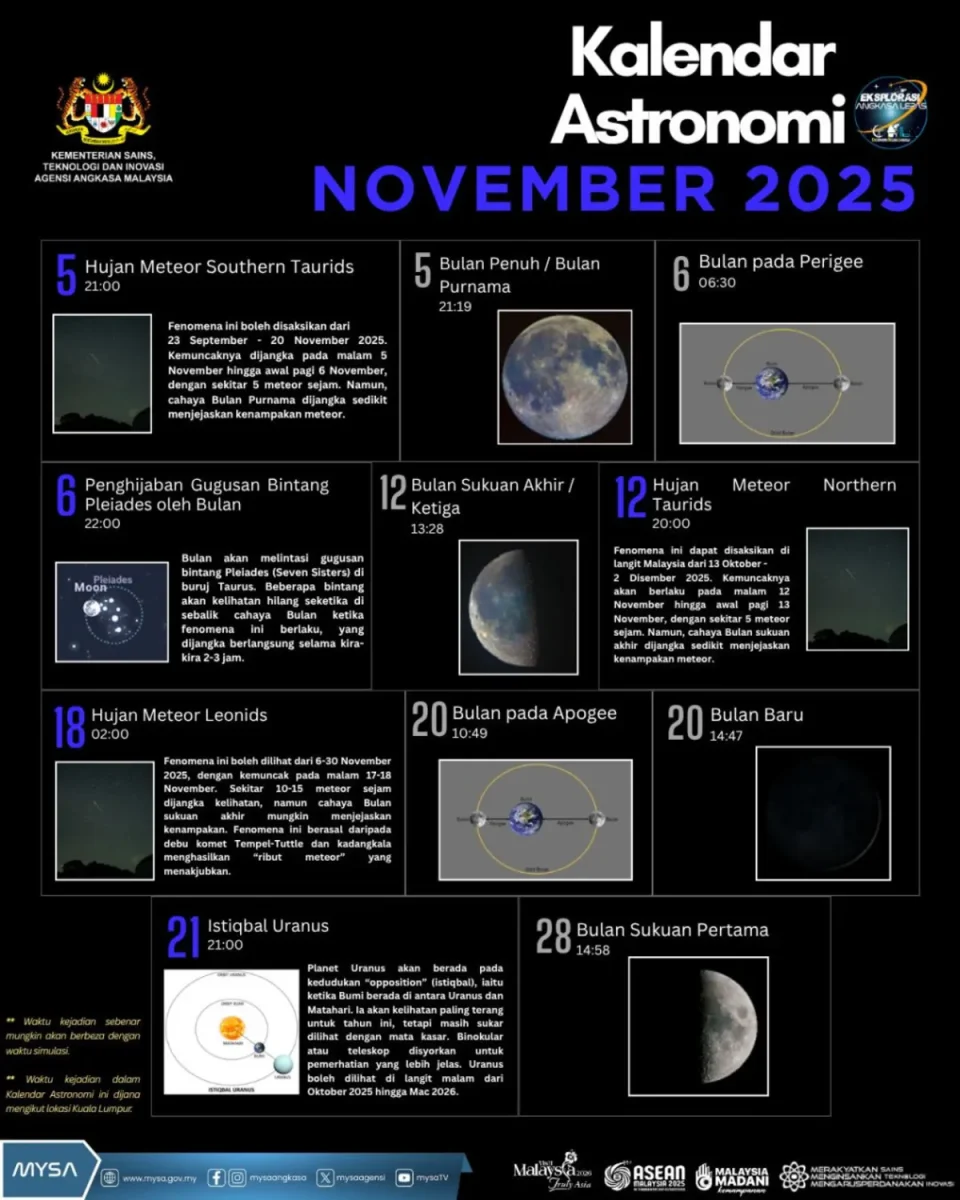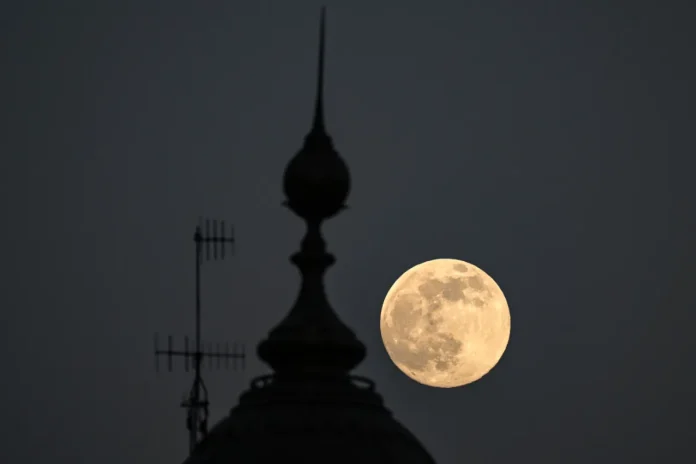Beaver supermoon peaks at 9.19pm with Southern Taurid meteors creating spectacular celestial display
SKY enthusiasts across Malaysia are in for an extraordinary celestial experience tonight as the year’s most magnificent supermoon coincides with an active meteor shower.
Beaver Supermoon Reaches Peak Brilliance
The November full moon, traditionally known as the Beaver Moon, will reach its peak illumination at 9.19pm local time this evening.
What makes this lunar event particularly special is its timing with the moon’s perigee – the point in its orbit closest to Earth.
At approximately 356,832 kilometres from our planet, the moon will appear noticeably larger and more luminous than typical full moons.
The lunar disc will officially become full just nine hours and 11 minutes after reaching its nearest approach to Earth, creating optimal conditions for this spectacular supermoon display.
According to astronomical data from timeanddate.com, this represents the most impressive supermoon of 2024, offering observers the brightest and most dramatic lunar view of the year.
Southern Taurid Meteors Add to Celestial Spectacle
Adding to tonight’s astronomical excitement, the Southern Taurid meteor shower will simultaneously reach its peak activity period.

The Malaysian Space Agency (MYSA) has confirmed that optimal viewing will occur from 9pm this evening through the early morning hours of November 6.
The Taurid meteor stream, which remains active from September 23 through November 20, has reached its maximum intensity phase.
What distinguishes the Taurids from other meteor showers is their characteristic slow velocity through Earth’s atmosphere, combined with their tendency to produce exceptionally luminous fireballs.
These slower-moving meteors create prolonged, brilliant streaks across the night sky, making them particularly photogenic and easier for casual observers to spot and appreciate.
Viewing Expectations and Conditions
Under typical dark-sky conditions, observers might expect to see approximately five meteors per hour during the peak period.
However, MYSA has advised that the concurrent full moon’s brightness may impact visibility conditions for fainter meteors.
The intense lunar illumination could wash out some of the dimmer shooting stars, though the Taurids’ signature bright fireballs should remain visible despite the moonlight.
How to Experience Tonight’s Celestial Show
No special equipment is required to enjoy either astronomical event.
Both the supermoon and meteor shower are easily observable with the naked eye, making this an accessible experience for everyone.
For those seeking enhanced views:
Binoculars can reveal additional lunar surface details and crater formations
Telescopes offer magnified views of the moon’s geological features
Wide-angle cameras are ideal for capturing meteor streaks alongside the bright moon
Optimal Viewing Tips
To maximize your viewing experience:
Location: Find areas away from artificial lights and urban light pollution
Timing: Begin observations around 9pm for the supermoon peak, continuing into late evening for meteors
Positioning: Allow 20-30 minutes for your eyes to adjust to darkness
Patience: Meteor watching requires time – the longer you observe, the more likely you’ll catch multiple fireballs
Comfort: Bring reclining chairs or blankets for comfortable sky-watching
Understanding the Beaver Moon Tradition
The November full moon’s “Beaver Moon” designation originates from Native American and colonial American traditions.
The name references the time of year when beavers complete their lodge preparations for winter, and when trappers historically set beaver traps before waterways froze.
Alternative traditional names for November’s full moon include the Frost Moon and the Mourning Moon, reflecting the seasonal transition into winter in the Northern Hemisphere.
The Science Behind Supermoons
A supermoon occurs when a full moon coincides with perigee, the moon’s closest orbital point to Earth.
The moon’s elliptical orbit means its distance from Earth varies throughout each monthly cycle, ranging from approximately 356,500 km (perigee) to 406,700 km (apogee).
During a supermoon, the lunar disc can appear up to 14% larger and 30% brighter than when it’s at apogee, creating a visibly more impressive celestial display.
About the Taurid Meteor Streams
The Taurid meteors originate from debris left behind by Comet Encke, a short-period comet that orbits the sun every 3.3 years.
Earth passes through two streams of this cometary debris annually – the Southern Taurids (active September-November) and the Northern Taurids (active October-December).
While the Taurids don’t produce high meteor counts like the Perseids or Geminids, their slower velocities (approximately 27 km/s) and higher proportion of bright fireballs make them uniquely spectacular for observers and photographers.
Weather Considerations
Clear skies are essential for optimal viewing of both phenomena.
Malaysians should check local weather forecasts and cloud cover predictions before heading out for observations.
Don’t miss this rare convergence of two remarkable celestial events – the year’s brightest supermoon paired with the dramatic fireballs of the Taurid meteor shower.










